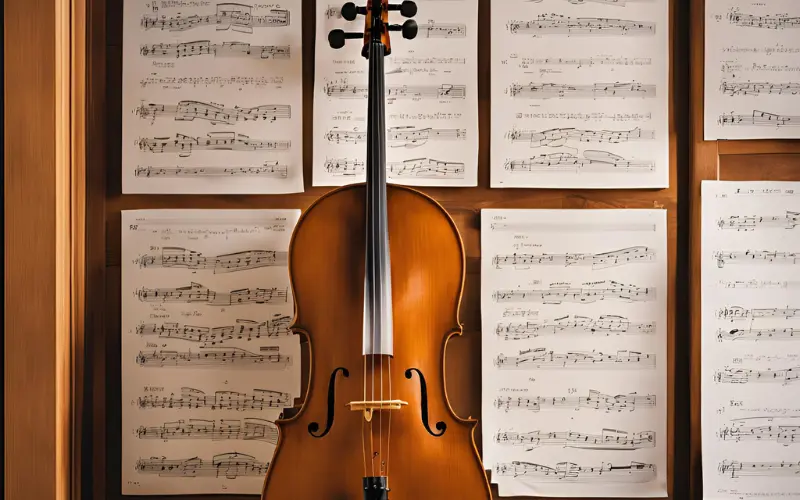If you’re wondering what a studio chart for cello looks like, you’ve come to the right place. A studio chart is a valuable tool used by musicians, teachers, and students. It helps track progress, organize practice sessions, and improve playing techniques. In this blog, we’ll break down what a studio chart is and how it works for cello players.
What is a Studio Chart?
A studio chart is a visual representation of a musician’s progress. It shows details like practice schedules, goals, and improvements. For cello players, a studio chart includes specific elements focused on mastering the cello. It serves as both a roadmap and a record of their musical journey.
Teachers often use studio charts to guide their students. It keeps everyone on the same page. It also helps students stay motivated by seeing their progress over time.
Components of a Cello Studio Chart
A typical studio chart for cello includes several sections. Each section serves a different purpose in tracking and improving the player’s skills. Let’s take a look at the common parts of a cello studio chart.
1. Weekly Practice Schedule
At the core of the studio chart is the practice schedule. The schedule breaks down daily or weekly goals for the student. For cello players, the schedule often includes:
- Scale practice
- Bowing techniques
- Repertoire pieces
- Sight-reading
- Etudes
These sections are organized in a way that helps students manage their practice time efficiently. It also allows them to focus on areas that need improvement.
2. Technical Goals
Every musician has technical skills they need to work on. A studio chart for cello lists these technical goals in a clear and structured way. Some common technical areas for cello include:
- Left-hand fingering accuracy
- Bowing precision
- Shifting between positions
- Vibrato development
Each goal has a place in the chart. As the student progresses, they can check off mastered techniques or add notes on what still needs work.
3. Repertoire List
Cello players often work on a variety of pieces. The studio chart includes a list of the pieces being studied. This section helps track which pieces are complete, in progress, or need extra attention. For each piece, the student and teacher can note:
- The composer
- Level of difficulty
- Date started
- Date completed
Tracking progress through different pieces of music ensures that the student stays on track with their learning objectives.
4. Feedback and Notes
One of the most important sections of a studio chart is the feedback area. This is where teachers leave comments, advice, and areas for improvement. It’s also a space for students to write down questions or thoughts during their practice.
Good feedback is essential for progress. It helps students understand what they need to work on and how to do it better. This section often evolves as the student gains more experience.
Why Use a Studio Chart for Cello?
A studio chart serves many purposes. It’s not just a practice schedule. It’s a tool for managing goals, improving techniques, and staying motivated. Here are a few reasons why every cello student should use a studio chart.
1. Improves Organization
Having a studio chart improves organization. It keeps track of everything in one place. Students can see their entire week’s practice at a glance. They know exactly what they need to focus on and how much time to allocate to each part of their training.
2. Tracks Progress
Progress isn’t always easy to see. A studio chart helps make it visible. By documenting each skill and piece, students can look back and see how far they’ve come. This visual progress helps boost motivation, especially during tough learning periods.
3. Customizes Learning
Not every student learns the same way. A studio chart allows teachers to customize the learning plan to each student’s needs. Some students may need more time on bowing techniques, while others may focus on sight-reading. The chart adjusts to these personal learning styles.
4. Encourages Consistent Practice
Practice is key for any musician. A studio chart encourages consistency. It holds students accountable for their daily practice sessions. Over time, this consistency builds solid skills and confidence in their cello playing.
Creating a Studio Chart for Cello
Now that you know what a studio chart for cello looks like, how do you create one? While some teachers provide pre-made charts, it’s also easy to create one yourself. Here’s a simple guide on how to set up your own studio chart for cello.
1. Start with a Template
You can start with a basic template or design one from scratch. Many cello teachers have their own studio chart templates, but if you don’t have one, a basic spreadsheet or even a notebook works.
2. Include All Key Sections
Make sure to include all the important sections we discussed:
- Practice schedule
- Technical goals
- Repertoire list
- Feedback and notes
Each section should have space for updates and notes. Keep it simple and easy to understand.
3. Review and Update Regularly
A studio chart should be reviewed regularly. Whether weekly or monthly, it’s important to update the chart as progress is made. Make it a habit to check off completed goals and write new ones.
Teachers can also review the chart during lessons. This ensures that the student stays on track and addresses areas that need improvement.
Conclusion
A studio chart for cello is more than just a practice tool. It’s a roadmap for progress and success. It helps students stay organized, track their growth, and receive valuable feedback from their teachers. Whether you’re a beginner or advanced player, using a studio chart is essential for achieving your musical goals.
In short, what does a studio chart for cello look like? It looks like a personalized tool, filled with goals, schedules, and feedback that guide a cellist to improve their craft. Every player’s chart will look a little different, but the purpose remains the same—steady and focused progress.

